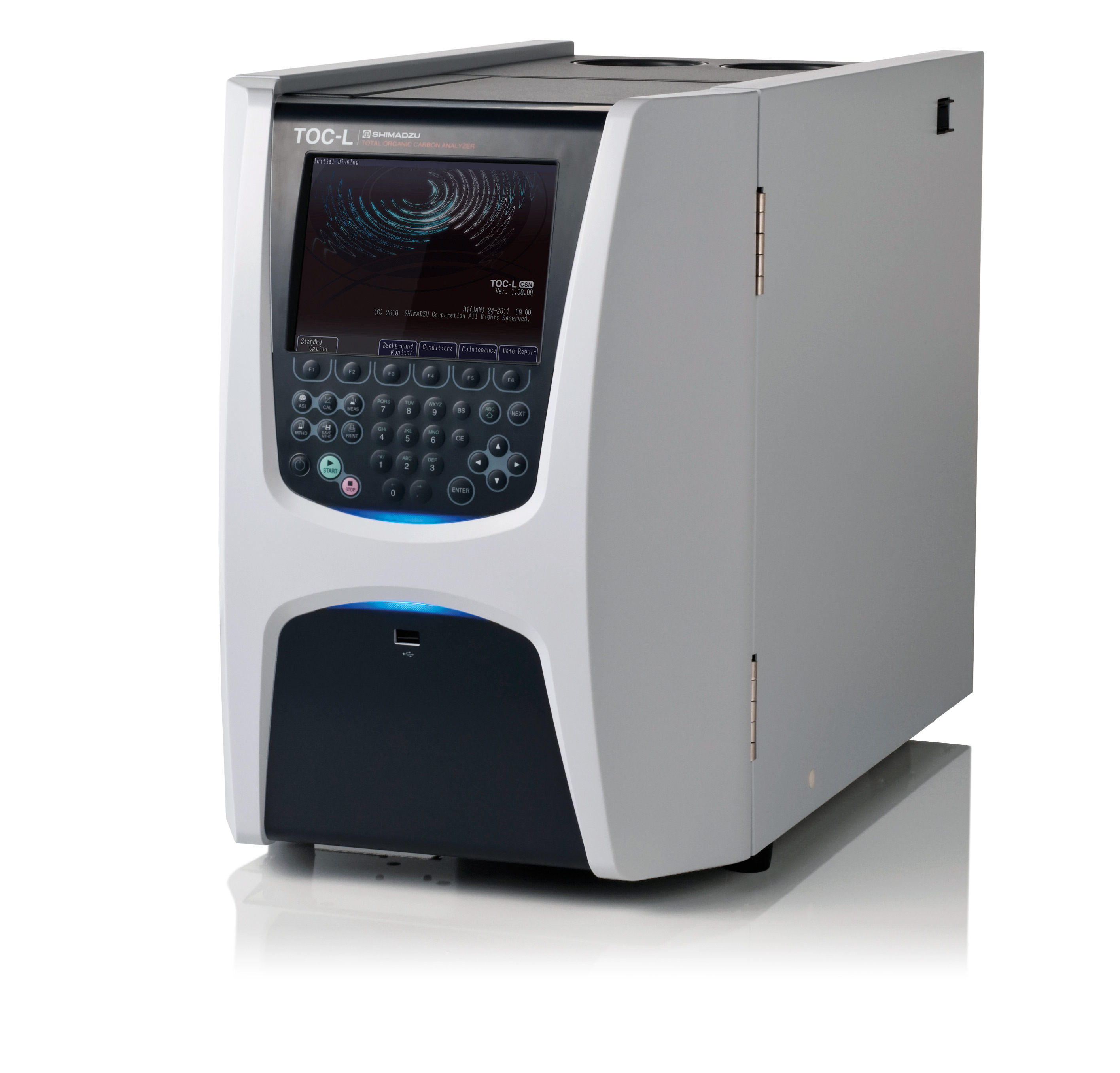TOC analyzer in quality control
A customer report from the pharmaceutical industry
Tillotts Pharma AG in Rheinfelden, Switzerland has installed a Shimadzu TOC-L analyzer for their quality control. The company produces and markets pharmaceutical products, medical devices and diagnostics for focused gastroenterological treatments and applications. In their “Tillotts Newsletter, issue 6” they describe applications and their experiences with the TOC analyzer.
n July 2011 a new TOC analyzer was installed and qualified in Quality Control. This equipment is used for measuring the Total Organic Carbon (TOC) content in liquid, solid or gaseous samples. It can be used in many applications for example cleaning validations, to verify the effectiveness of cleaning procedures and analysing the purity of different water qualities e.g. waste water, drinking water and water for pharmaceutical use.
The TOC content is a very important sum parameter and implemented in many monographs in all pharmacopoeias. The TOC analysis is an unspecific method determining all organic components that can be oxidised to carbon dioxide (CO2) which is determined quantitatively and very precisely by IR absorption. The advantage is that all components are measured in one run and that even unknown compounds like impurities are captured. In contrast other methods like chromatography (HPLC) or spectroscopy (UV, IR) detect and quantify a specific component only like the active substance (e.g. mebeverine hydrochloride) or a cleaning agent.
There are two different kinds of preparation methods: the wet chemical oxidation and the combustion catalytic oxidation method. The commercially available TOC analyzers all have very wide measuring ranges over several decades of e.g. 4 µg/L up to 30,000 mg/L for the actual type TOC-LCPH of Shimadzu. This is facilitated by diluting the sample solution. The calibration of the analytical method is done by means of a standard solution with a certified content of organic carbon of 1,000 mg/L. Of course, an SST (system suitability test) is performed with two independent references (benzoquinone, saccharose) to show the proper function of the whole system.
Summary description of the TOC analyzer in QC
 Figure 1: TOC-L
Figure 1: TOC-L
Model: Shimadzu TOC-LCPH (see figure 1)
Type: combustion type analyzer
Software: compliant to 21 CFR Part 11 (FDA) – Use of normal or sensitive catalyst, analyzing down to a limit of detection in ppm to ppb range*
Autosampler ASI-L: for effective and efficient working
Automatic sample acidification/sparging
Automatic dilution function: if the TOC content is too high for direct measuring
*ppm = parts per million (10-6), ppb = parts per billion (10-9)
Conclusion
The new TOC-LCPH analyzer of Shimadzu was installed and qualified without problems. It was used since then in cleaning validations (showing in three runs the validity of the general cleaning procedure) and in the verification of a single cleaning procedure e.g. after the custom manufacturing of capsules for a clinical trial where only one batch of placebo and verum were produced. Here, the result of the cleaning is available on the next day and enables a quick decision whether a second cleaning is necessary or not and therefore avoiding long times of cessation in production. It is a very useful piece of equipment that is also quite robust; after some initial trials we are now familiar with its routine use. It has a wide measuring range and the analysis can be performed very quickly with high precision. The handling of the TOC system (equipment and software) is easy, so an effective and efficient working is possible.
“Last but not least, we chose Shimadzu because of having a partner with great experience and reliable service not only in TOC analysis but other analytical techniques (IR, UV) that gives support in technical aspects, methods and qualification. We have a service contract in place like for other analytical equipment.”